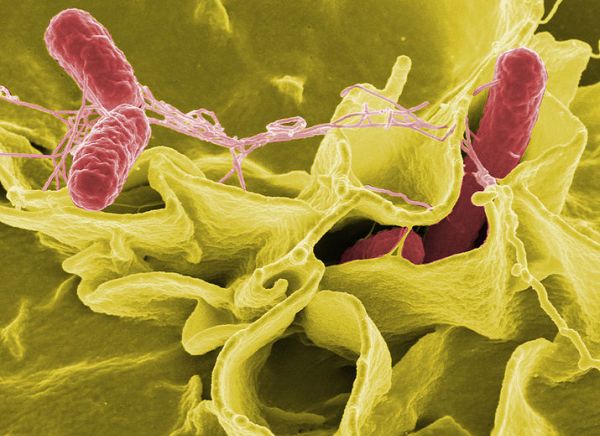 Depleting energy resources are just a part of the problem concerned with environmental degradation. Researchers Kelvin B. Gregory and Philip R. LeDuc from Carnegie Mellon University have made a breakthrough in this regard. A nano fuel cell powered by bacteria is their vision.
Depleting energy resources are just a part of the problem concerned with environmental degradation. Researchers Kelvin B. Gregory and Philip R. LeDuc from Carnegie Mellon University have made a breakthrough in this regard. A nano fuel cell powered by bacteria is their vision.
Kelvin B. Gregory, Assistant Professor, Civil and Environmental Engineering of Carnegie Mellon University says that “We have developed a biological fuel cell which uses microbial electricity generation enabled by microfluidic flow control to produce power.” The bacteria powered cell is a creepy yet powerful concept which develops energy through a process called metabolism on plates made up of gold. The power is channelized by the fuel cell which uses the bacteria for producing biofilm through a naturally occurring organic compound.
The researchers are hoping for a spectacular transition of normal batteries into microbial batteries; that means all the energy with infinite density would be stored at one single tiny place. When Associate Professor, Mechanical Engineering was asked about the new innovation he said “Our biology-powered fuel cell could be less costly to make and more easily deployed in remote areas than conventional batteries that require invasive maintenance.”
The vision of powering a cell through bacteria was driven by a thought of delivering clean renewable solution to the never ending needs. Although, Gregory said “Our work also is prompted by increased interest in improved battery technology for small scale electronic devices and sensors.” Fuel Cell using bacteria is not a new concept and it exists in different forms since 1911 when M.C. Potter developed energy by using E. coli. In 2007, Queensland University with Foster’s Brewing, Australia, produced CO2, clean water through Microbial Fuel Cell (MFC).
In 2008, Biodesign Institute used bacteria to generate electricity on MFC Technology. Similarly, Researchers at University of Minnesota engineered renewable petroleum using bacteria, sunlight and carbon dioxide. Bacteria are having a rich diversity and different types of MFC reactors and research teams exist on this planet. It is also true that all reactors run on different operating principles. Here, Carnegie Mellon University has distinguished its efforts by minimizing the size of entire fuel cell. Being a global university, Carnegie trains more than 11000 students into various fields.
Via: BrighterEnergy




